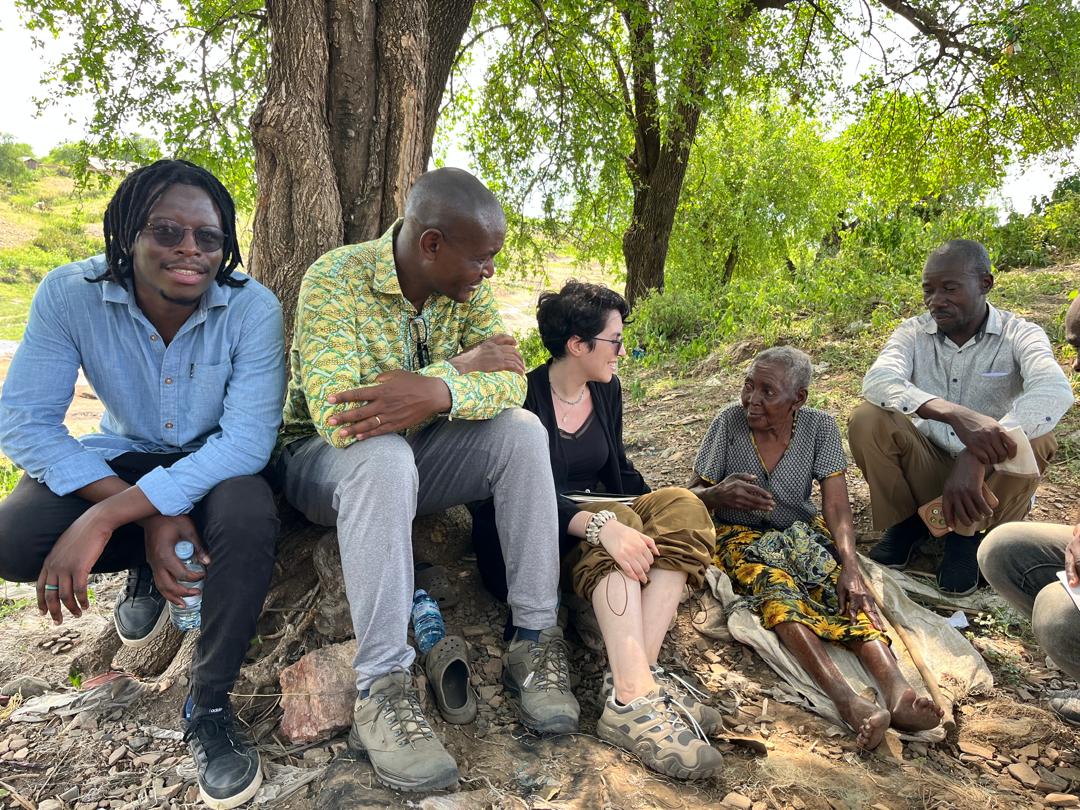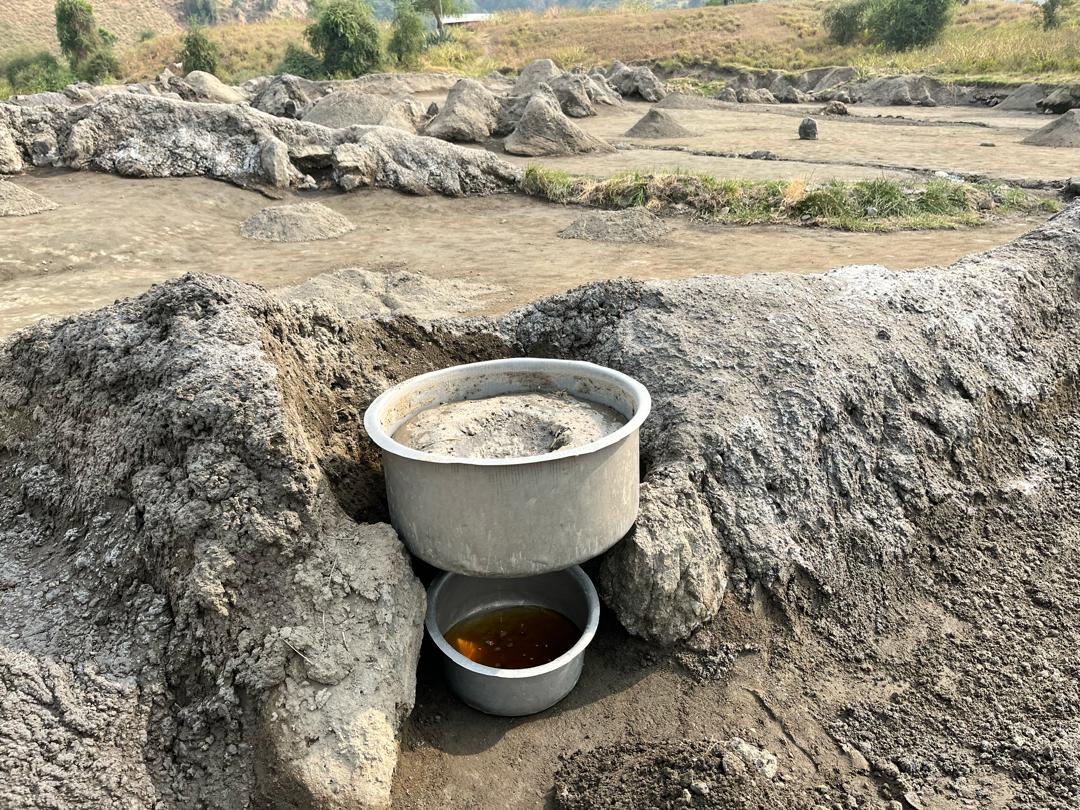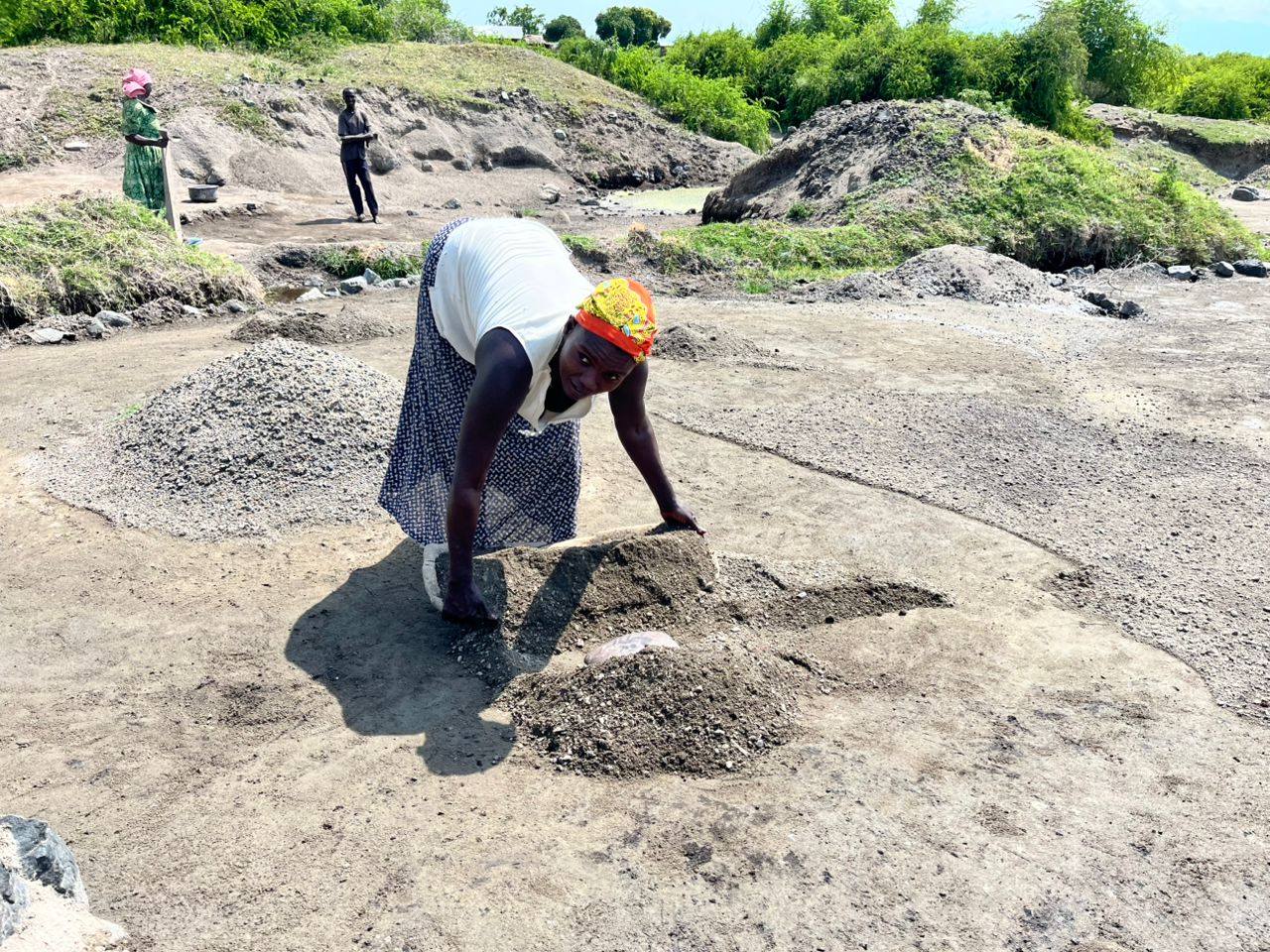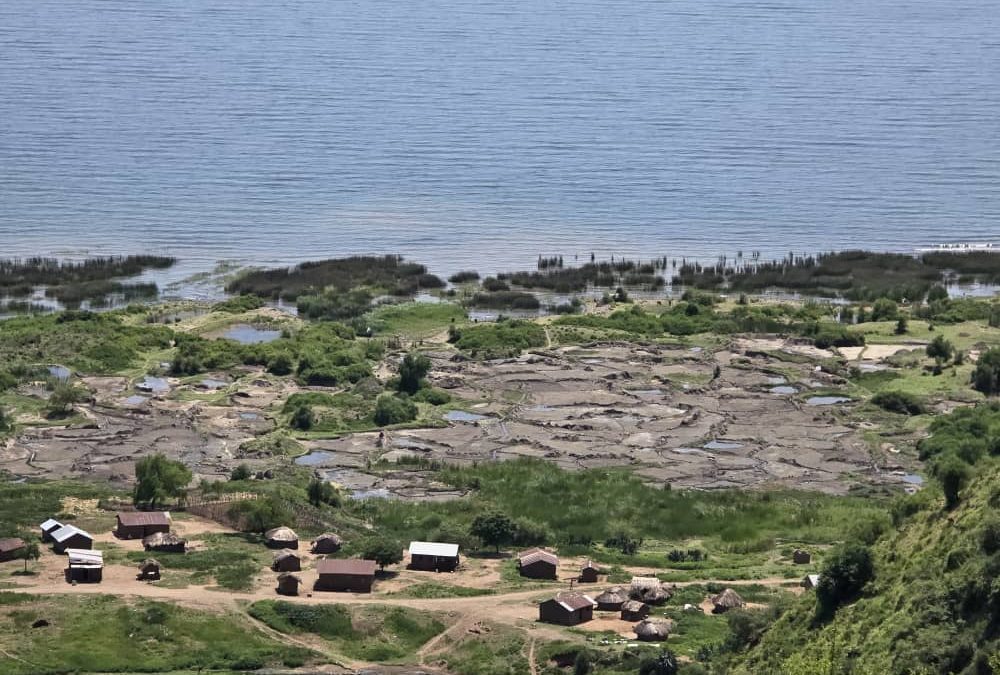Nestled on the eastern shores of Lake Albert in western Uganda lies the Kibiro Salt Producing Village. The property, situated in the captivating Kigorobya Sub-County, Hoima District, within the territorial boundaries of the Bunyoro-Kitara Kingdom. It is positioned amidst Lake Albert and a 300-600-meter-high escarpment on the eastern side of the Western Rift Valley, offering awe-inspiring views and cultural significance. The cozy village of an estimated 4000 people is more than just a geographical location, it is a vibrant community of people that have a shared tradition of salt extraction. Here, the earth itself provides, and generations have perfected the intricate art of harvesting shimmering white salt crystals, sustaining both their livelihoods and a rich cultural heritage. Today, the community of Kibiro, with the crucial backing of the Government of Uganda and the African World Heritage Fund (AWHF), is embarking on a profound journey: to have their ancestral home inscribed on the prestigious UNESCO World Heritage List, ensuring its protection and global recognition for all time.
Among those leading the charge is Raymond a 27-year-old local Site Attendant who has watched, learned, and now guards the sacred site of salt production in Kibiro. With sun-kissed skin and eyes full of purpose, Raymond reflects on his childhood memories digging beside his grandmother and carrying water from the salt springs. For him, working in the salt gardens is more than just about earning a living but rather a more personal process that forms who he is as a person.
“This salt garden is our identity. It’s who we are. From the day I could walk, I was helping in my grandmother in the salt gardens. Today, I coordinate conservation activities and guide researchers and visitors when they come here. But more than that, I protect our way of life. Having Kibiro inscribed as a World Heritage Site would bring the recognition and protection this site so desperately needs. We must ensure that future generations can witness, learn from, and participate in this unique process, just as I have been privileged to.”
Raymond Irumba: Kibiro Site Conservator

Elder Joniver Tibenderana, an over 84-year-old matriarch and master salt artisan, has dedicated her entire life to the salt gardens. For her, the salt is more than a product, it is the thread that weaves her community together.
“We don’t just make salt, we grow it, we nurture it, and we live it. I was taught by my mother, and I taught my daughter, and she taught her own. My great-granddaughter is now learning. If this place is protected, our skills will not die. The world will know that women here have shaped this land for generations.”
Joniver Tiberandani: Elder in the Village


Indeed, one of the most striking features of Kibiro’s salt-making tradition is the central role played by women. They are the undisputed leaders of the craft, their strength, resilience, and precision driving the village’s economy. Despite facing the dual challenges of resource depletion and modern economic pressures, Kibiro’s women remain steadfast pillars of the community. Their work is coordinated through a dedicated committee led by a visionary chairlady who ensures efficiency, fairness, and mutual support.
“This site is our livelihood, our inheritance, and our legacy. With climate change and economic pressures, our resources are depleting. But our commitment to protect it remains. We need this recognition to sustain our families, to preserve our traditions, and to inspire our daughters.”
Charity Alinaitwe: Chairlady of the Women’s Committee.

Through generations of close observation and learning, the women of Kibiro have mastered the rhythms of the land. They have learnt that when the sun scorches the Rift Valley floor, salt layers within the earth begin to “sweat” and the soil absorbs the salt through capillary action. In the afternoons, women gather on the salt pans, gently raking the damp earth into mounds over several weeks. The soil is then transferred into sand-lined pans, allowing the brine to seep through and collect in basins.
At home, over smoky fires, the saltwater is boiled until only pure white crystals remain. These are then molded into cone-shaped packages weighing about three kilograms. Families sell or barter the salt for food, medicine, or school fees, sustaining their households through the ancient trade.
In Kibiro, salt is more than a product, it is a way of life. Nearly 100 families own a “salt garden,” passed down matrilineally from mother to daughter. Scholars alike believe that this humble craft once underpinned the great Bunyoro kingdom’s wealth over the past nine centuries has the potential to endure for centuries to come. Now, as hotter weather and rising Lake Albert threaten these ancient pans, Kibiro’s people and heritage experts alike urge that the salt fields and hot springs be protected and preserved, so that this living link between nature and culture endures for generations to come.
As rising temperatures and swelling waters from Lake Albert threaten to wash away centuries of knowledge. The community has mobilized this vision, forming heritage committees, engaging in conservation efforts, and participating in education and outreach. Local leaders have integrated heritage protection into village planning, and traditional knowledge continues to guide their relationship with the land.
The African World Heritage Fund (AWHF) has been a steadfast partner of the Government of Uganda on Kibiro’s journey to the World Heritage List. In collaboration with the Department of Museums and Monuments of the Ministry of Tourism, Wildlife, and Antiquities and the Uganda National Commission for UNESCO, AWHF has provided technical support, support for the review of the draft nomination dossier, and facilitated consultations with the community to ensure their voices, values, and vision are at the heart of the submission.
AWHF’s recent visit to Kibiro reaffirmed the deep cultural significance of the site. The organization listened to testimonies, evaluated conservation challenges, and worked closely with stakeholders to align the nomination with UNESCO’s standards. This collaborative process is rooted in AWHF’s mission: to empower African communities to safeguard, celebrate, and benefit from their heritage.
“Our heritage is strongest when communities lead the way,” says Dr. Albino Jopela, Executive Director of AWHF. “Kibiro is a shining example of a living heritage site that deserves global recognition. AWHF is proud to support this nomination and to amplify the voices of Kibiro’s people on the world stage.”
Inclusion on the World Heritage List would bring not only global recognition, but also vital support for conservation, community development, and sustainable tourism. For Kibiro, this recognition is not just symbolic, it is transformative.
The Kibiro Salt Producing Village vividly exemplifies an Outstanding Universal Value of a distinctive salt production industry underpinned by a matriarchal system supported by Indigenous Knowledge Systems and practices and Living Heritage that has sustained the local population for over 900 years and possesses the potential to endure for forthcoming generations.
As Raymond and the people of Kibiro prepare their final steps toward nomination and the world watches with anticipation. AWHF stands alongside this community in the hope that inscription of the site on to the prestigious World Heritage list will serve as a way of honoring the values and traditions of this community while championing its future.

